(left to right) Jack Miller, 35 year non-profit industry veteran; Barry Spencer, Donor Motivation Georgia; Scott Keffer, creator of The Donor Motivation Program
Non-profit organizations are faced with continuous economic uncertainty and rapidly shifting donor attitudes. They are struggling to maintain financial viability and secure permanence, stability, and strength for their organization over the short-term and long-term.
More than ever, as the challenges abound and multiply, charities are looking for answers and solutions to cementing their standing and relationship with generous donors. Endowments have been a key piece to the financial stability puzzle along with major giving.
How does a non-profit secure needed funding to meet short-term and long-term goals?
I recently met with Jack Miller, 35-year veteran of non-profit development and fund-raising efforts, ranging from major giving to sustainable planned giving initiatives that build endowments. Jack Miller’s planned giving program at United Way of Allegheny County, Pittsburgh, Pennsylvania received United Way of America’s Lasting Legacy Award, a symbol of the best planned giving program in the country.
His planned giving program at the Pittsburgh History & Landmarks Foundation not only raised millions of dollars but also helped to preserve numerous historic western Pennsylvania buildings and farms.
Needless to say at this point, Jack Miller is an expert fundraiser, development professional, planned giving specialist, major giving expert and is skilled in non-profit leadership.
Here are three secrets about planned giving I learned from this industry veteran:
- Secret number one is build trust with donors. Donors are all too often contacted by non-profits when they are asking for money. Jack says you must build trust beginning with a human touch because people give to organizations and missions through other people, not websites and letters. It is also important to know and understand donors’ issues and challenges and put their needs and interests ahead of the charity and fundraising goals.
- Secret number two is provide donors with access to expertise in their issues and challenges. They “need good information” that is accurate and reliable. Often, they don’t know where to go or from whom to find it. And when they wake up at 2am with a worry, it is not about what charity to make a donation to or what the charity is doing with their contribution. They have money longevity challenges, family issues to resolve, and misunderstandings about their personal wealth situation and future. Non-profit professionals need to figure out how to help their donors address these types of issues.
- Secret number three is recognizing that “people don’t know their life can make a bigger difference.” Donors are working to meet daily challenges and rarely slow down long enough to consider the ways their life and money can have a bigger impact in the community. Face-to-face conversations about the desires donors have for there life can unlock the potential for giving never before thought possible.
So, how does a charity do this?
Endowments are key to solving a lot of financial struggles for the charity. Planned giving, when done right, strengthens the endowment and provides great benefits for the donor as well.
There are three keys to a successful planned giving strategy:
- Key # 1: Successful charities deal with the headache of assets beyond cash.
- Key # 2: Planned giving is best done face to face.
- Key # 3: A proven systematic process is the most efficient way to engage donors.
Jack Miller is a unique nonprofit professional because he says yes first to new potential opportunities and then figures out how to make it happen. At United Way of Allegheny County, Jack was the first person to use a new program created by Scott Keffer, The Donor Motivation Program. Jack saw the potential of the program to put him in front of major donors through a meaningful experience that added value to their life and situation. That was over 16 years ago, and it paid off big time: helping him grow the endowment for United Way significantly. He was convinced “seminars never work” until he implemented The Donor Motivation Program, to raving reviews and planned giving successes.
The most important thing a non-profit professional can do with donors is to show them how their lives can make a bigger difference. Face-to-face conversations are critical for doing this effectively. Due to limited time and resources, charities need to find more ways to connect with donors through meaning experiences so that the donors understand they are cared about for more than their money.
To find out more about The Donor Motivation Program go to www.donormotivationgeorgia.com.
Barry Spencer is a licensed and trained Donor Motivation professional in Georgia with a passion to help more people have a bigger impact with their lives.
